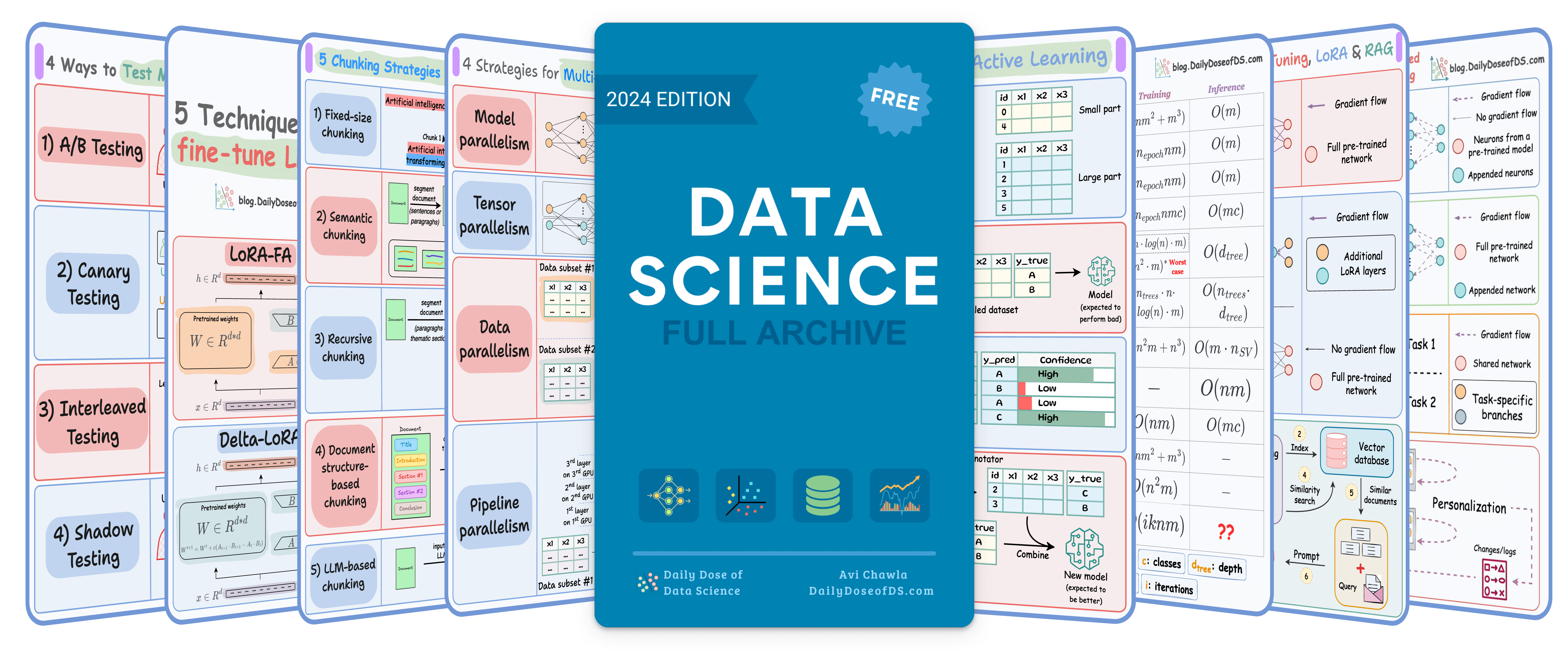

TODAY'S ISSUE
TODAY’S DAILY DOSE OF DATA SCIENCE
Generate synthetic datasets with Llama3 [with code]
The LLM that emerges from the pre-training phase isn’t entirely useful to engage with. For instance, here’s how a pre-trained (not fine-tuned yet) model typically behaves when prompted:

It’s clear that the model simply continues the sentence as if it is one long text in a book or an article.
Generating synthetic data through existing LLMs and utilizing that for fine-tuning can improve this.
In this case, the synthetic data will have fabricated examples of human-AI interactions—an instruction or query paired with an appropriate AI response:
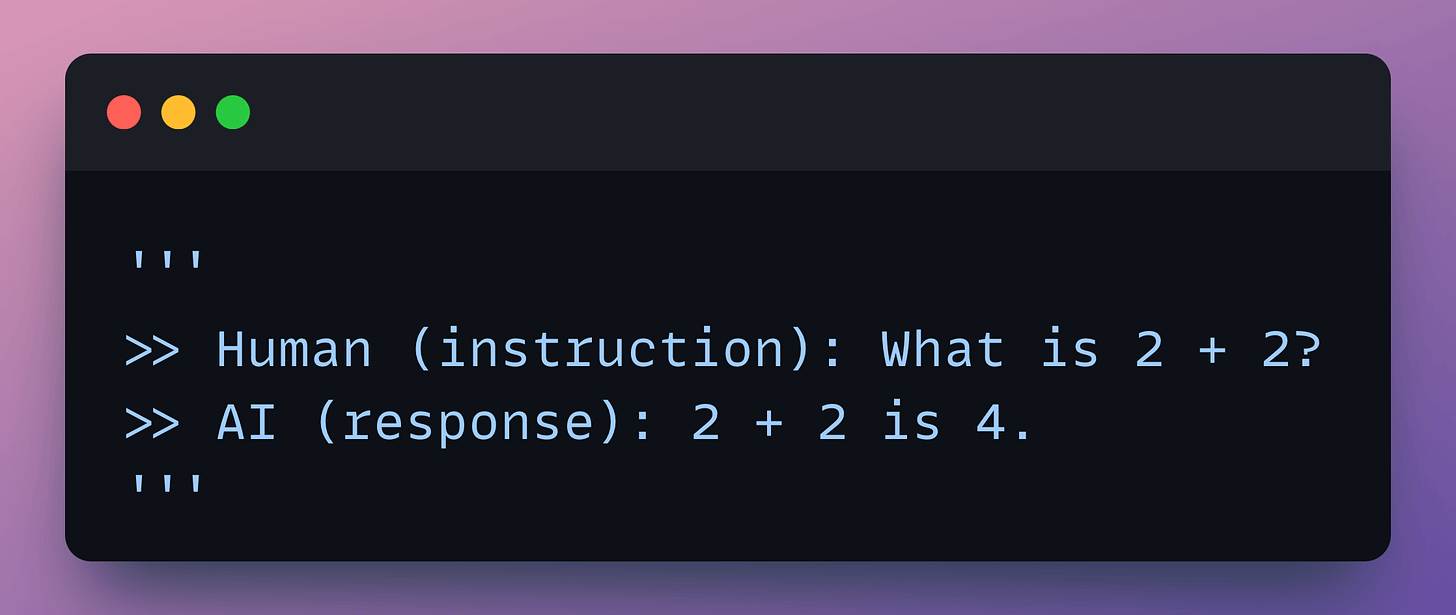
Lately, we’ve been playing around with Distilabel, an open-source framework that facilitates generating domain-specific synthetic text data using Llama-3.
This is great for anyone working on fine-tuning LLMs or building small language models (SLMs).
The underlying process is simple:
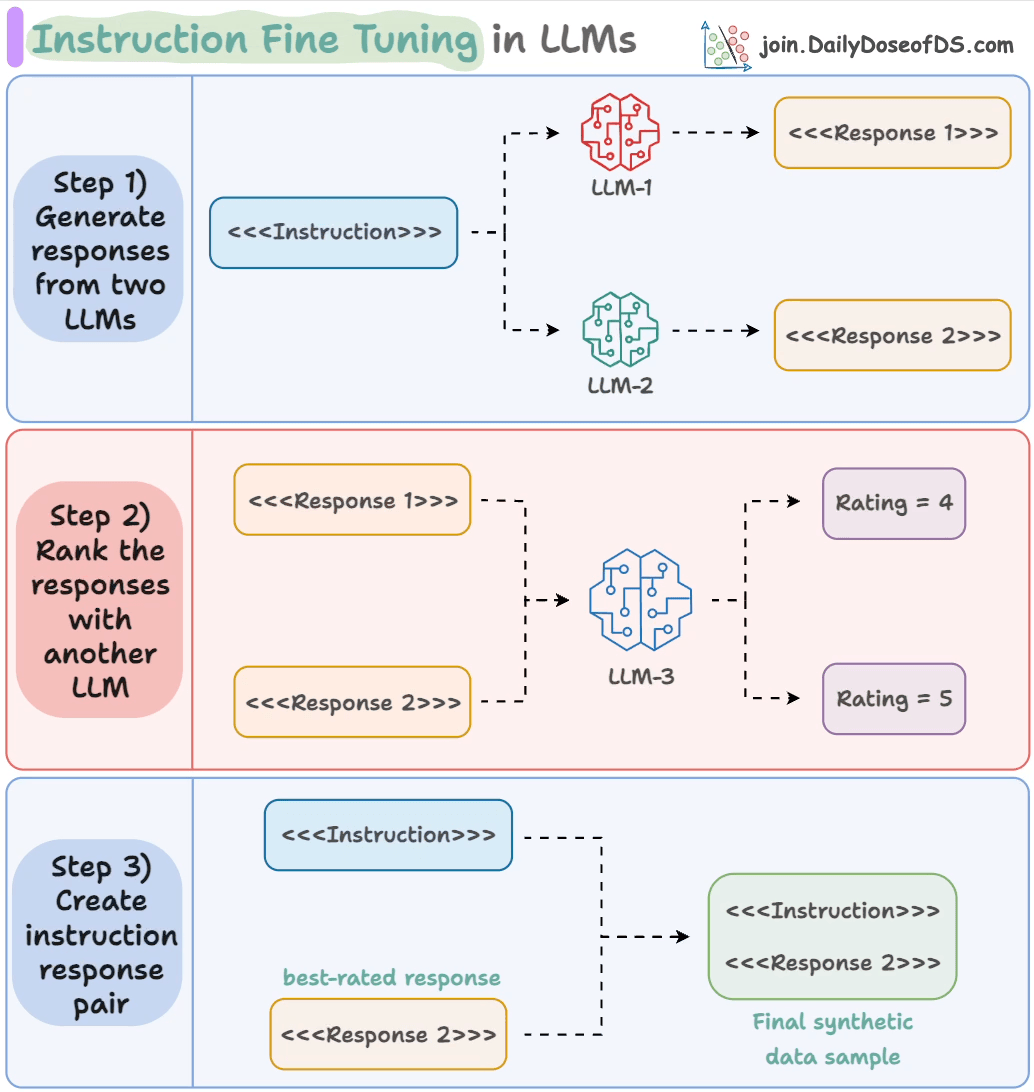
- Input an instruction.
- Two LLMs generate responses.
- A judge LLM rates the responses.
- The best response is paired with the instruction.
And you get the synthetic dataset!
A sample is shown below:

On a side note, this is quite similar to how we learned to evaluate our RAG pipelines in Part 2 of our RAG crash course.
Let’s look at the implementation below with the Distilabel library.
First, we start with some standard imports:
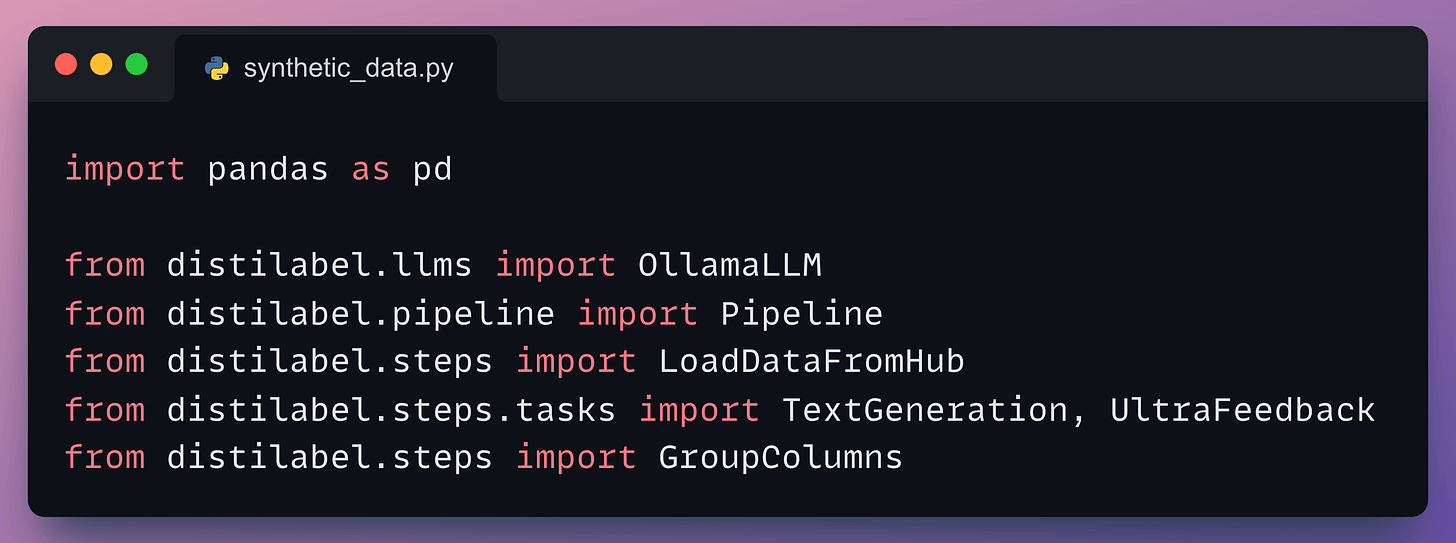
Next, we load the Lllama-3 models locally with Ollama (we covered the procedure to setup Ollama here):

Moving on, we define our pipeline:
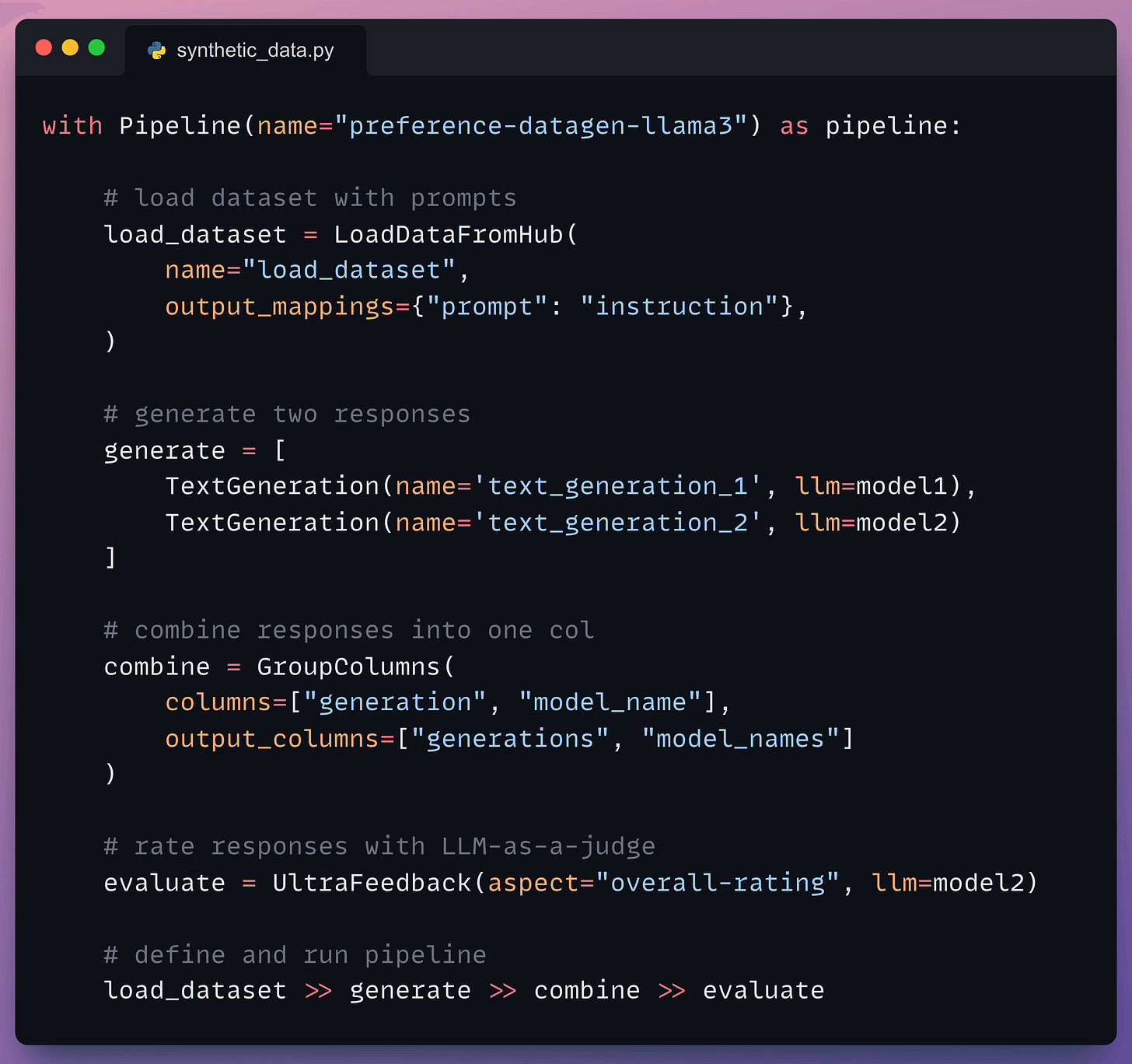
- First, we load the dataset (we’ll pass it shortly).
- Next, we generate two responses.
- Once done, we combine the responses into one column (under the hood, a prompt template is also created for the third LLM).
- Moving on, we evaluate the responses with an LLM.
- Finally, we define and run the pipeline.
We execute this as follows:
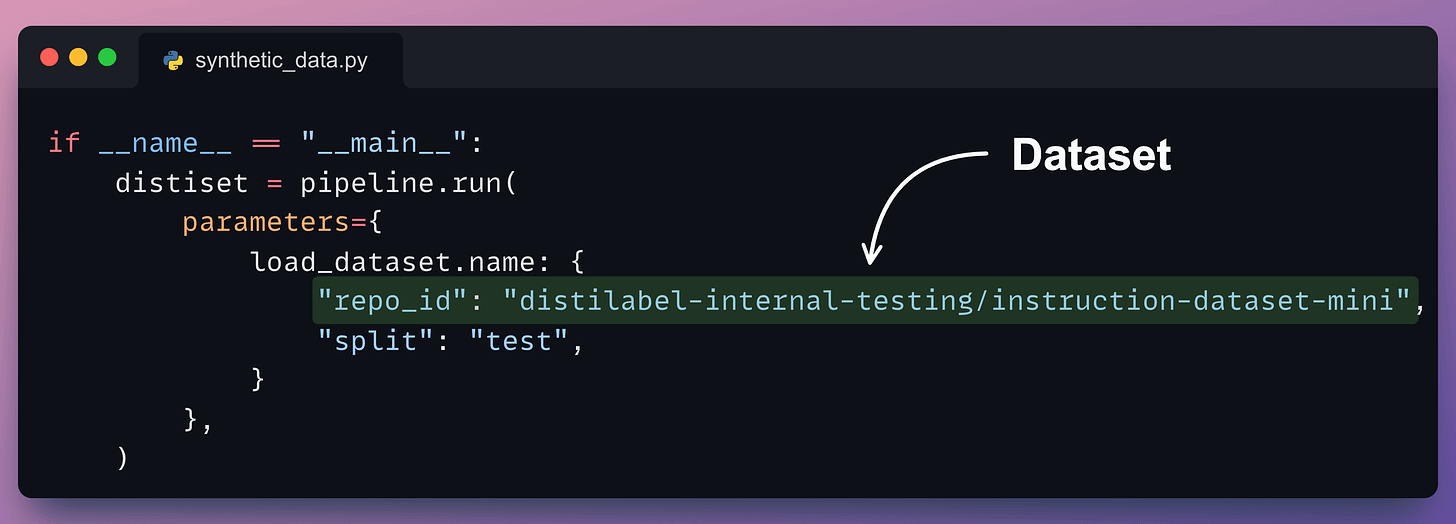
Done!
This produces the instruction and response synthetic dataset as desired.

That was simple, wasn’t it?
This produces a dataset on which the LLM can be easily fine-tuned.
In future issues, we’ll cover more about our learnings from synthetic data generation.
That said, if you know how to build a reliable RAG system, you can bypass the challenge and cost of further fine-tuning an LLM specific to your data.
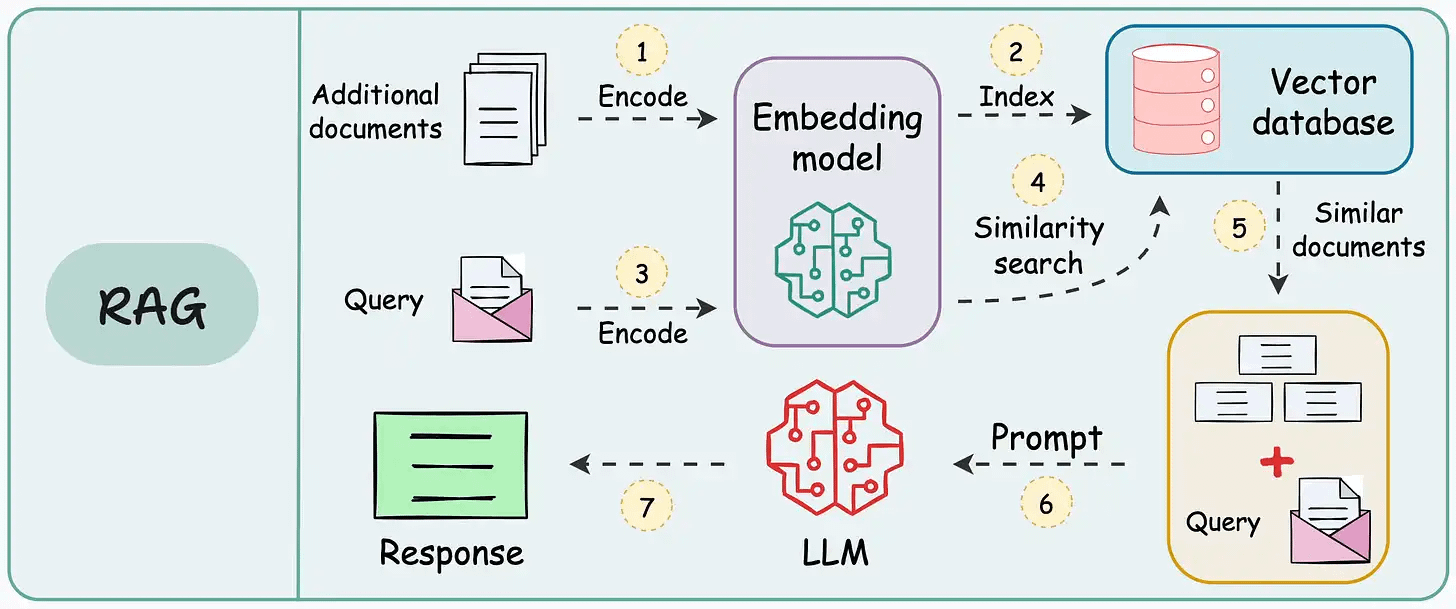
That’s a considerable cost saving for enterprises.
We started a crash course to help you implement reliable RAG systems, understand the underlying challenges, and develop expertise in building RAG apps on LLMs, which every industry cares about now.
- Read the first part here →
- Read the second part here →
- Read the third part here →
- Read the fourth part here →
- Read the fifth part here [OPEN ACCESS] →
Of course, if you have never worked with LLMs, that’s okay. We cover everything in a practical and beginner-friendly way.
👉 Over to you: What are some other ways to generate synthetic data for fine-tuning?
IN CASE YOU MISSED IT
Model compression to optimize models for production
Model accuracy alone (or an equivalent performance metric) rarely determines which model will be deployed.
Much of the engineering effort goes into making the model production-friendly.
Because typically, the model that gets shipped is NEVER solely determined by performance — a misconception that many have.

Instead, we also consider several operational and feasibility metrics, such as:
- Inference Latency: Time taken by the model to return a prediction.
- Model size: The memory occupied by the model.
- Ease of scalability, etc.
For instance, consider the image below. It compares the accuracy and size of a large neural network I developed to its pruned (or reduced/compressed) version:
Looking at these results, don’t you strongly prefer deploying the model that is 72% smaller, but is still (almost) as accurate as the large model?
Of course, this depends on the task but in most cases, it might not make any sense to deploy the large model when one of its largely pruned versions performs equally well.
We discussed and implemented 6 model compression techniques in the article here, which ML teams regularly use to save 1000s of dollars in running ML models in production.
Learn how to compress models before deployment with implementation →
IN CASE YOU MISSED IT
Building a RAG app using Llama-3.3
Meta released Llama-3.3 last week.
So, we released a practical and hands-on demo of using Llama 3.3 to build a RAG app.
The outcome is shown in the video below:
The app accepts a document and lets the user interact with it via chat.
We used:
- LlamaIndex for orchestration.
- Qdrant to self-host a vector database.
- Ollama for locally serving Llama-3.3.
THAT'S A WRAP
No-Fluff Industry ML resources to
Succeed in DS/ML roles

At the end of the day, all businesses care about impact. That’s it!
- Can you reduce costs?
- Drive revenue?
- Can you scale ML models?
- Predict trends before they happen?
We have discussed several other topics (with implementations) in the past that align with such topics.
Here are some of them:
- Learn sophisticated graph architectures and how to train them on graph data in this crash course.
- So many real-world NLP systems rely on pairwise context scoring. Learn scalable approaches here.
- Run large models on small devices using Quantization techniques.
- Learn how to generate prediction intervals or sets with strong statistical guarantees for increasing trust using Conformal Predictions.
- Learn how to identify causal relationships and answer business questions using causal inference in this crash course.
- Learn how to scale and implement ML model training in this practical guide.
- Learn 5 techniques with implementation to reliably test ML models in production.
- Learn how to build and implement privacy-first ML systems using Federated Learning.
- Learn 6 techniques with implementation to compress ML models.
All these resources will help you cultivate key skills that businesses and companies care about the most.
SPONSOR US
Advertise to 600k+ data professionals
Our newsletter puts your products and services directly in front of an audience that matters — thousands of leaders, senior data scientists, machine learning engineers, data analysts, etc., around the world.





